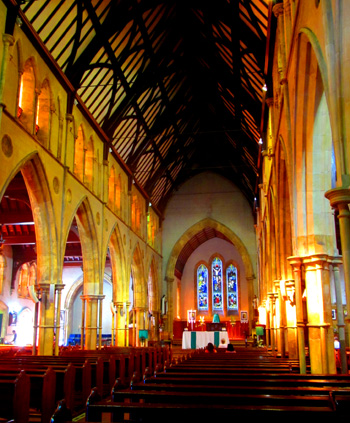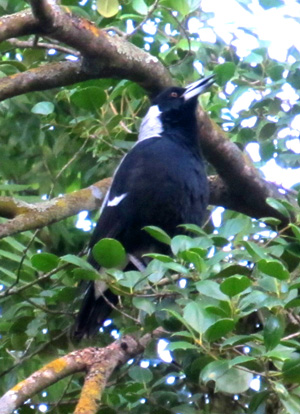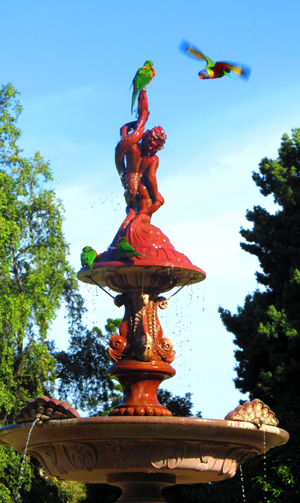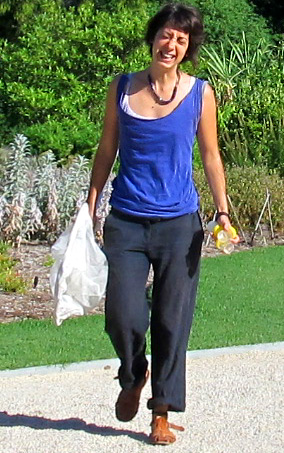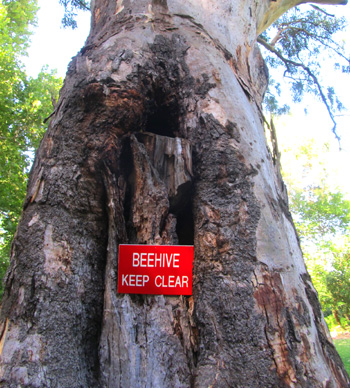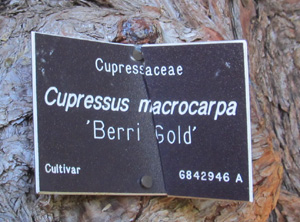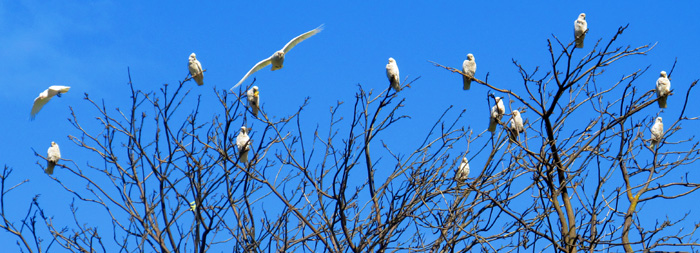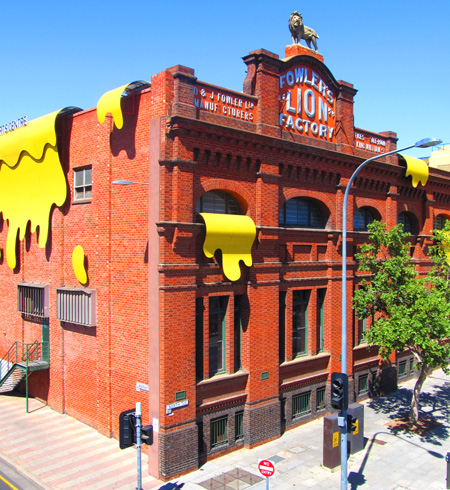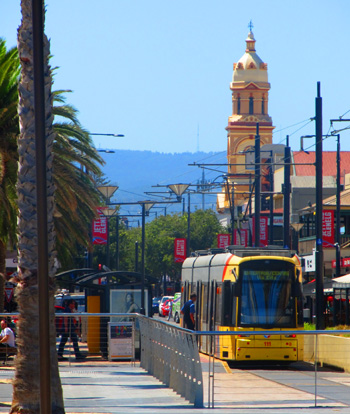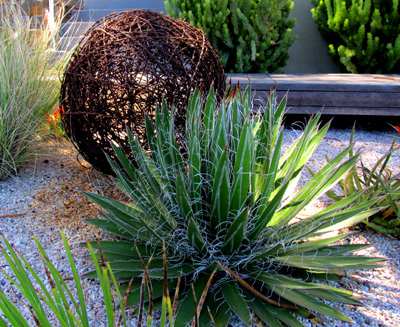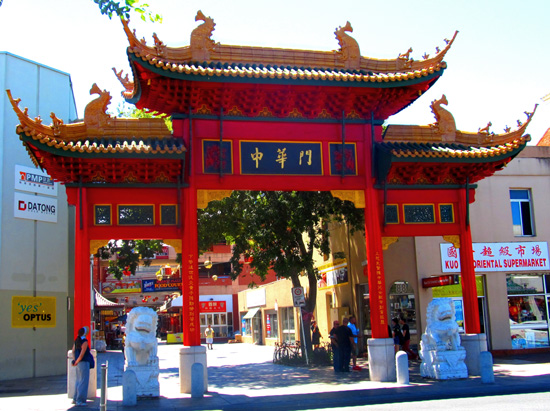|


We liked this ball stuck between the buildings.

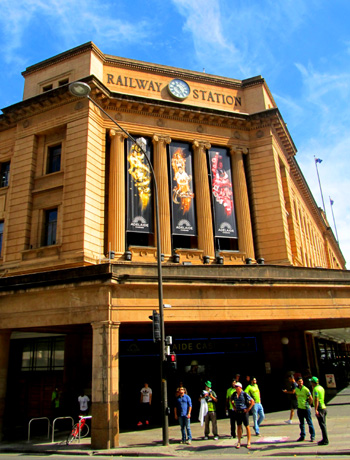
The railway station serves as the hub of a nice rail system,
which we used extensively during our 2-day stay.

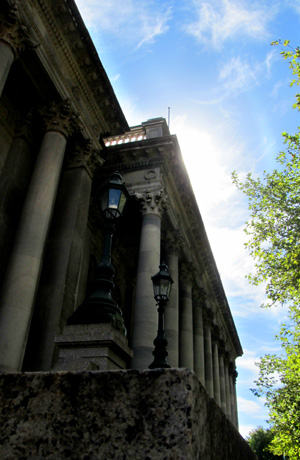


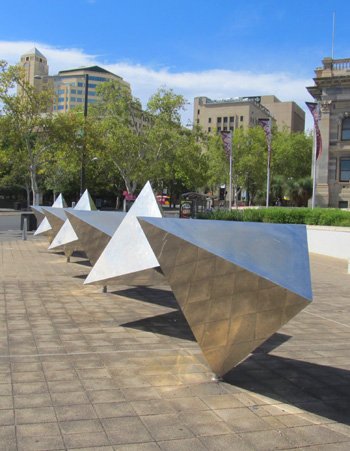
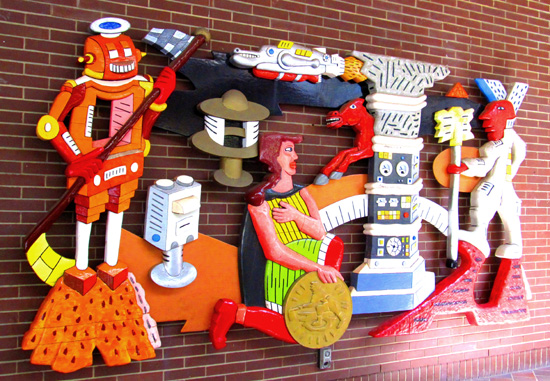
We enjoyed the street art near the festival
event center.

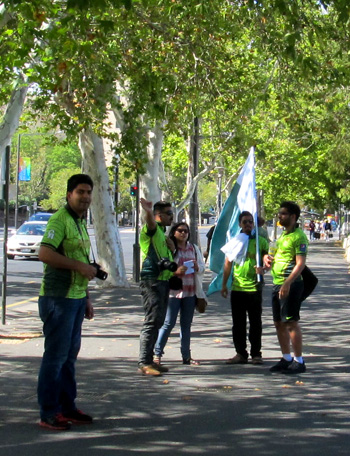
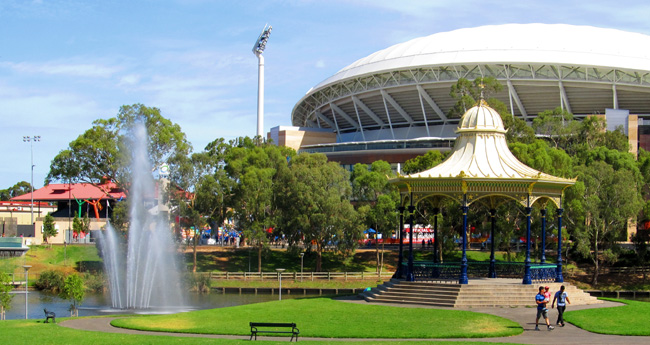
Adleaide was hosting the world cricket championships. A raucous
cricket match between India and Pakistan was in progress as
we passed. We saw groups of fans parading around town carrying
flags.


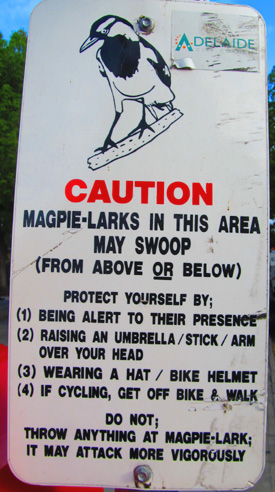
We saw these magpie larks and some other birds around this eleaborate
fountain to drink the water runoff.


We headed down toward the river walk and saw this lapwing and
these interesting ducks.


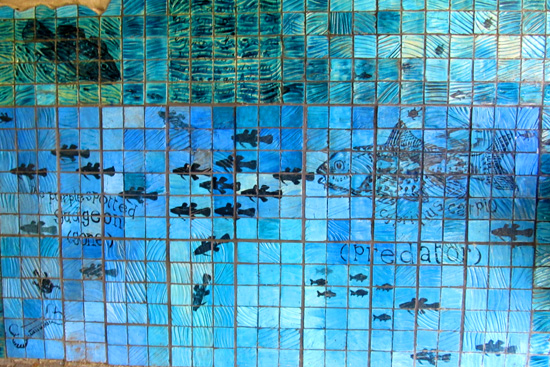

The mosaic under this bridge told fish tales. Black & white
cormorants wished for more than just the stories.

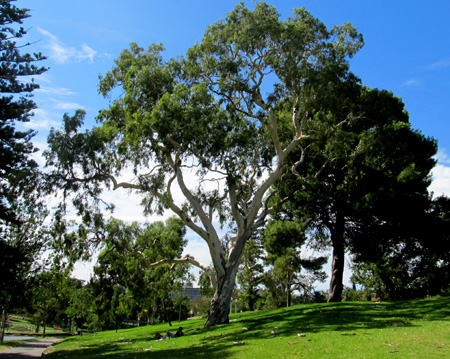
Black swans, river boats, and large eucalyptus trees made for
a pleasant walk by the river.



We took a bus headed to Hahndorf, an old German settlement.


We liked the small museum in the back of the tourist office.

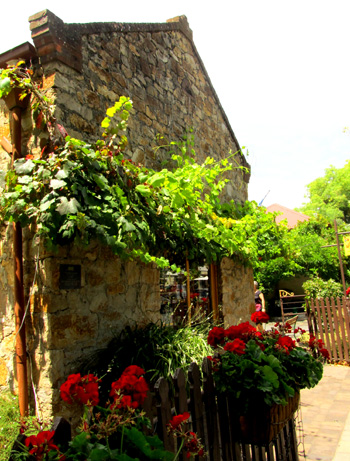


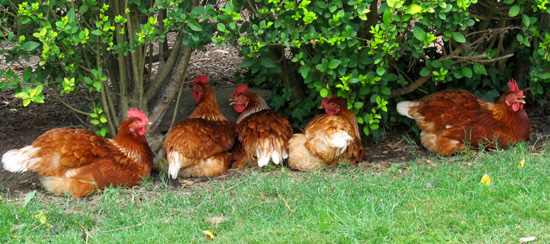
We walked the length of the main road and thought that it had
become not much more that a tourist trap, but good to know that
they urge people to be careful of their old folk.

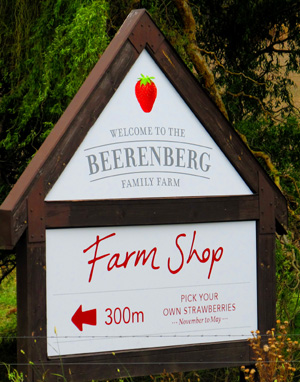

A Lutheran church seemed in character with a German town. We
stopped at the strawberry farm outside of the town hoping they'd
have some cold German beer, but no, so we had cream sodas, which
were so sweet they made our teeth ache, but we drank them down
anyway.


One last front yard from Hahndorf and we took the bus back to
the train station where headed for the Outer Harbor and called
it a day.
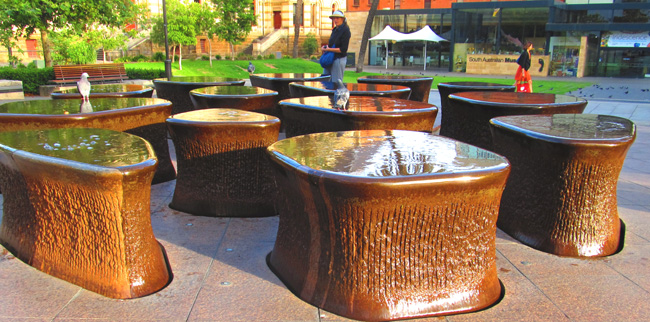
We got an early start the next morning, took a train to town
again, and headed for the Botanic Garden, which is behind the
South Australia University campus. We liked this overflowing
fountain sculpture in front of the university.


We liked the university flag...
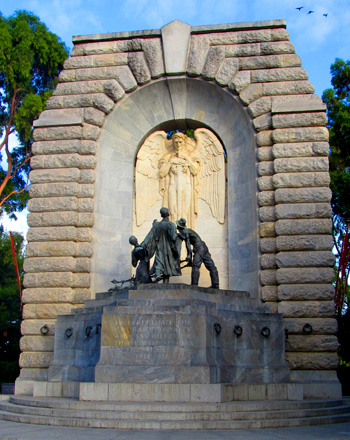

Another World War I memorial. It was was very hard on Australia.


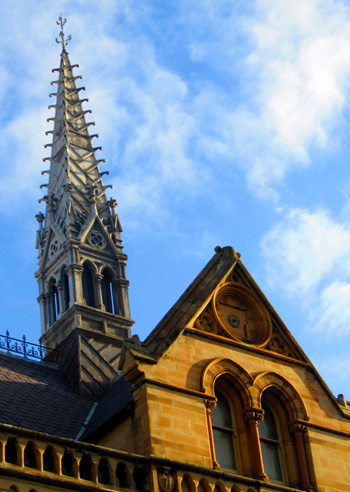
|















